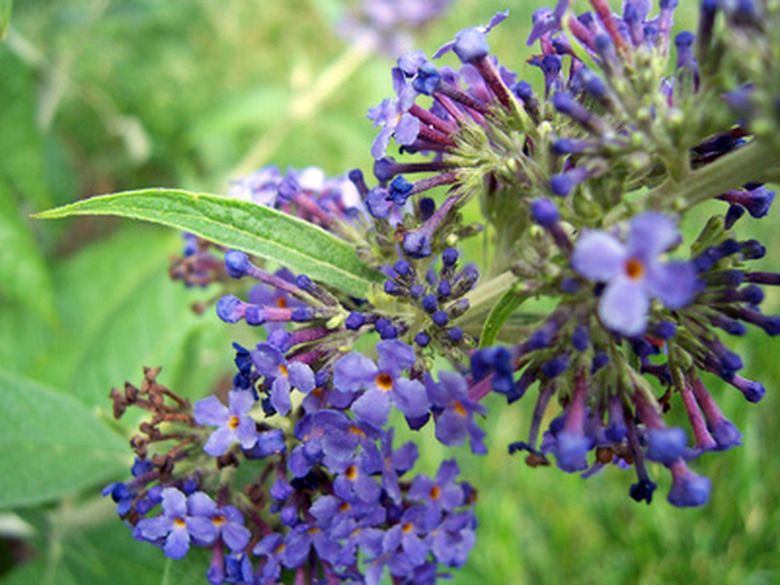Should I Prune The Dead Flowers From My Butterfly Bush?
Removing dead flowers from a plant is called — not surprisingly — deadheading. Deadheading is somewhat different from pruning, which is done once or twice a year to maintain the shape and health of a plant, usually a shrub or a tree. Deadheading is done throughout the blooming season, often to encourage the plant to produce new blossoms and sometimes for other reasons.
Butterfly Bush
Butterfly bush, also called summer lilac, is a shrub in the genus Buddleia or Buddleja. In the U.S. the most common butterfly bush is Buddleia davidii, which grows from 6 to 15 feet and is hardy to 20 F. The color of the flower ranges from dark purple to pink to pure white, with some specimens showing red and gold blossoms. Butterfly bush is a rather unwieldy, spiky shrub. As you would suspect from its name, butterfly bushes attract many species of butterflies. Butterfly bush is not native to the U.S.
- Removing dead flowers from a plant is called — not surprisingly — deadheading.
- Deadheading is somewhat different from pruning, which is done once or twice a year to maintain the shape and health of a plant, usually a shrub or a tree.
Deadheading
The term deadheading refers to the practice of removing the blossoms from a plant when they begin to lose their color and shrivel up. Gardeners utilize this practice for many plants, from prize roses to early blooming pansies. Oftentimes gardeners deadhead plants by pinching off the blossoms as they notice they are wilting, but some gardeners make a routine of deadheading every day, often examining the garden and deadheading in the evening.
Why Deadhead Butterfly Bush?
There are two reasons for deadheading the butterfly bush. One is the common reason that when you deadhead a plant, the blossom does not go to seed and often the plant will continue blossoming, when otherwise it would not. Second, deadheading often results in more prolific blossoms as the season goes on. Finally, butterfly bush is a very hardy, fast-growing plant that can become invasive and force out native vegetation when it escapes from the garden. Eradicating butterfly bush after it has gotten a start in the wild is extremely difficult. Deadheading, by preventing the bush from going to seed, helps prevent it from spreading.
- The term deadheading refers to the practice of removing the blossoms from a plant when they begin to lose their color and shrivel up.
- One is the common reason that when you deadhead a plant, the blossom does not go to seed and often the plant will continue blossoming, when otherwise it would not.
How to Deadhead Butterfly Bush
When you deadhead butterfly bush, you can simply pull the spent blossoms off the plant. When you want to increase the number of blossoms and keep the plant blooming throughout the summer, cut off the blossoms with a hand pruner just above the first set of leaves. You must deadhead throughout the growing season; doing it just once or twice will accomplish none of the goals described here.
